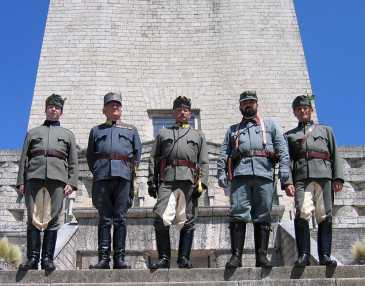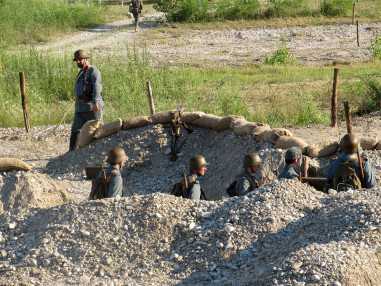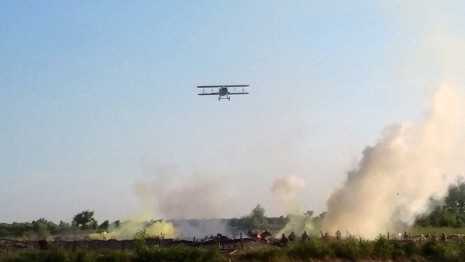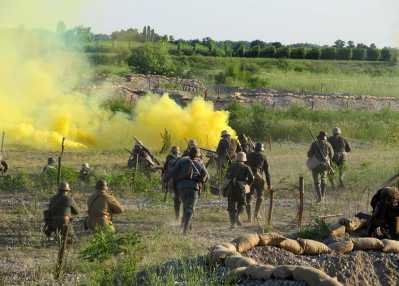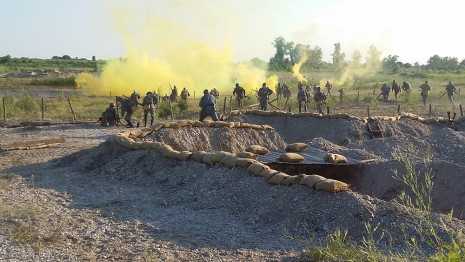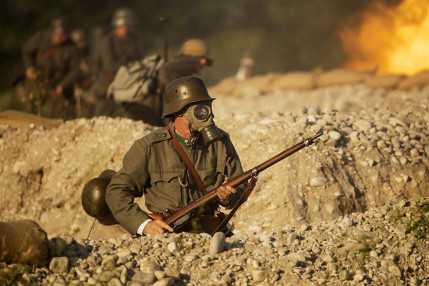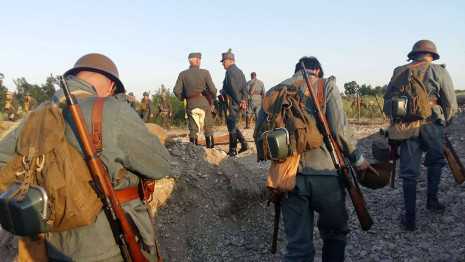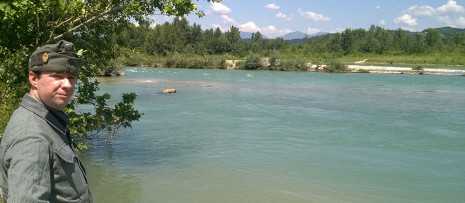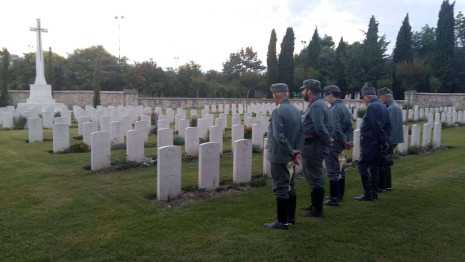War Game and Commemoration at the Piave
Szöveg: Captain Gergely Tóth | 2018. június 23. 11:19On the centenary of the last significant offensive of the Austrian-Hungarian Monarchy again the sounds of shots and explosions were heard on the banks of the River Piave. More than three hundred reenactors participated in the re-enactment of the battle, coming not only from the territory of the former Monarchy, but even from Italy and Great Britain.
Galéria

Although the battle began with a violent river-crossing in June 1918, the re-enactment of this owing to the water-level and currents of the Piave could not be re-enacted. In spite of this, taking advantage of the half day preceding the battle, the traditionalists managed to get – over the bridge – to the once intended destination, the southern bank, and there they paid tribute at the giant war memorial erected on the height of Montello. The 32 meter high, bastion-like monument raised in 1935 is the final resting place of 9325 dead heroes, whose mortal remains were moved there from the 120 nearby small graveyards. It houses a small museum, and provides a fantastic panorama onto the river, from across which a long time ago attacks were launched by the Austrian-Hungarian regiments manned mostly by Hungarian soldiers.
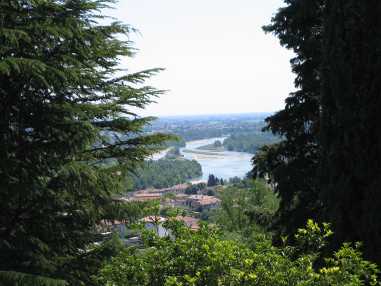
On the 371 meter high Montello Hill, the soldiers of the Budapest 32nd Infantry Regiment and the Machine gun Company of the joint 5th and 1st Hussar Regiment – now dismounted – could not only take a firm stand against the vastly superior Italians, but they beat the counterattacks back so successfully, that finally when the retreat was ordered, they could execute it with low losses, and effective breaking away from the demoralized enemy.
As summarized by Archduke Joseph August, General of the Austro-Hungarian Army (promoted to Field Marshal at the end of October 1918) in his dispatch disclosed after the battle: “Each one of you can take pride in what you accomplished, and I am proud, too, because you defeated an enemy superior in number, whole divisions of the enemy were destroyed, each time you beat their desperate and enormously violent general attacks back with a wonderful heroism, you gained unfading laurels at the price of hard struggles. Again you showed the world – as you had done so many times in the Carpathians, in Russia, in Galicia, and in the great Karst Cemetery –, that our beloved homeland wants to live, and we wish to achieve that our enemies respect its sacredness and territorial integrity, that despite the four years’ war, the will in our heart still lives, to save our homeland from our enemies’ thirst of plunder, and that our army through this sacred endeavour will more and more strengthen. If they still want to threaten us after this, the time will come, when we shall – not as now —, strike on them not just with one falchion stroke, but we shall eradicate them once and for all. When the order arrived, the bloodied Montello Hill was evacuated, without being seen by the exhausted enemy. The enemy – even after hours – believed that you are in front of them, because their infantry furiously fired at the line, from where you had left 12 hours ago."

After the Montello commemoration, in the afternoon, the battle was re-enacted in the fields surrounding the village of Tezze di Piave, by the river, where the Italian organisers did their best with the preparations: by planting more than three hundred pyrotechnic devices, building a two-line trench system, and by distributing the traditionalist commanders detailed “battle plans".
The progress of the “battle“ was the same as over a hundred years ago, at first short but heavy artillery fire was shelled on the Italian positions, then “gas shooting" followed. In the meantime Austro-Hungarian patrols cut paths through the barbed wire entanglements, and the attack was launched after relocating the artillery fire on the Italian second line. This action was supported by the machine guns and also by a flame-throwing squad. Meanwhile an Italian airplane tried to disrupt the attack with bombing, but the Central Powers’ plane chased it away.

Following the occupation of the Italian first line, and reversing the sandbags, serving as bulwarks, a heavy fire fight, and a hand grenade battle began, supported by the forwarded machine guns under the cover of the infantry troops. The Italian counterattacks stalled on the ground and in the communication trenches as well, but finally – upon order – the Austro-Hungarian troops had to retreat. This happened in orderly fashion, protected by the fire targeted at the Italian troops. At the end of the battle everybody occupied his original position.
After the battle there was an opportunity for building relationships between the many attending troops representing the quality military traditionalists and for co-ordinating the plans concluding the centenary period. The following day an all-day live military history exhibition was staged, and in the afternoon, another battle was organised in the outskirts of the town of Nervesa, across the river.
Closing the commemorations, the participants visited the nearby British Military Graveyard.

Photos of Attila Szalay-Berzeviczy, Zsófia Székely



